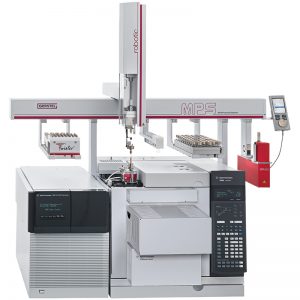The analysis of volatiles in solids is a common analytical problem. Examples include volatile aroma compounds in foods and plant materials (coffee, tea, and herbs), residual fragrances from soaps and fabric softeners on textiles, and volatiles in polymer resins, films and plastic products.
Several techniques are available that allow direct analysis of the volatiles in a variety of solid matrices with little or no sample preparation. Static headspace GC (HS-GC) is probably the most commonly applied technique for analysis of volatiles in solids. Direct thermal desorption (TDS), sometimes referred to as dynamic headspace analysis, and Solid Phase Microextraction (SPME) are alternative techniques that can now be automated. The relative sensitivity of these techniques, and the strengths and limitations of each when applied to a variety of solid matrices should be considered when choosing the most appropriate approach for a new analysis. Until now a direct comparison of these techniques for a variety of samples on equivalent instrumentation has been difficult to find.
Samples from the classes mentioned above were analyzed using HS-GC, SPME and TDS sample introduction into the same HP 6890 GC instrument. Column and detector conditions were maintained the same for all sample introduction methods. Generally, sensitivity of static headspace sampling was 10-50x lower than SPME sampling. Direct Thermal Extraction was found to be 50-100x higher sensitivity than SPME sampling. Besides sensitivity, advantages and limitations of the three sample introduction techniques for dealing with various sample types (low vs. high boilers, wet samples) should be considered before choosing an analytical approach.



